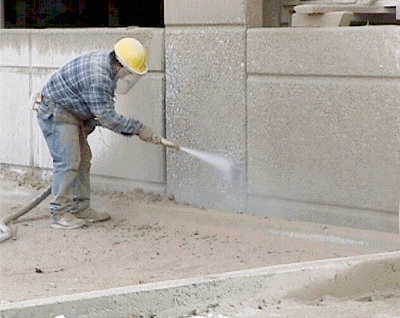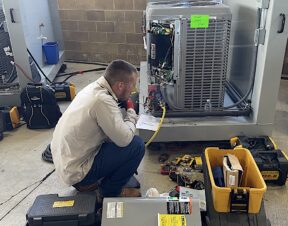The method of wet blasting, also known as vapor blasting, is used to prepare a surface for protective coating. It entails cleaning the object’s surface and applying an even texture to it. The rough surface of the object is what permits the paint or protective coating to cling to it.
Wet blasting is suitable for a wide range of materials. To effectively clean and prepare anything from wood to stainless steel, users can choose the type of abrasive media and pressure. Wet blasting can be used to securely prepare. wood, soft and hard metals, glass, aluminum and wood.
Wet blasting is similar to dry sandblasting in that both processes use pressured air to force abrasive material, such as sand, onto an item, although you can read here about what media is used for wet blasting. Wet blasting also includes a third component: water. Water softens the abrasive media’s impact, resulting in a finer texture and making it safe to use on a range of surfaces.

What Is the Process of Wet Blasting?
Wet blasting can be done in a variety of ways, but they all function by forcing abrasive material and water onto a surface with pressurized air or water. The abrasive media will strike the substrate’s surface, leaving small indents. The addition of water softens these indents, resulting in a uniform texture.
The abrasive medium will impact the surface of an object harder and more erratically if there is no water present. This results in an inconsistent and, at times, rougher texture.
Hydro blasting is a type of wet blasting that creates a slurry from abrasive media and water. To clean and prepare the surface, a blaster employs water pressure to force the slurry onto it.
Wet Blasting’s Most Common Uses
Wet blasting is a versatile surface preparation technique that is beneficial to practically every sector. Wet blasting is usually used to prepare a surface for paint or a protective coat, but its applications are far-reaching.
Cleaning
The surface of the objects you intend to paint must be clean. Wet blasting not only prepares a surface for painting, but it also cleans it. Wet blasting is a good method for cleaning and removing:
- Rust and oxidation
- Stains from old paint
- Coatings from the past
- Coatings in powder form
- Chemicals derived from grease and oil
- Dirt and Dust
- Carbon and smoke residue
Other pollutants and debris can also be effectively removed with wet blasting. Each type of abrasive media can remove different impurities.
Wet blasting produces a smoother surface finish. This is due, in part, to the freedom you have in modifying the PSI and selecting the appropriate abrasive media for your project.
However, it is the water that permits wet blasting to produce a superior surface finish than other blasting procedures.
The water acts as a cushion around the particle of media. When it collides with a surface, the water diffuses the force, preventing the particle from forming jagged edges. The water also keeps the particles from breaking apart, which may result in larger, harsher depressions.
The finished surface will be smoother and more even, with better adhesion to paints and protective coatings.




Join the conversation: